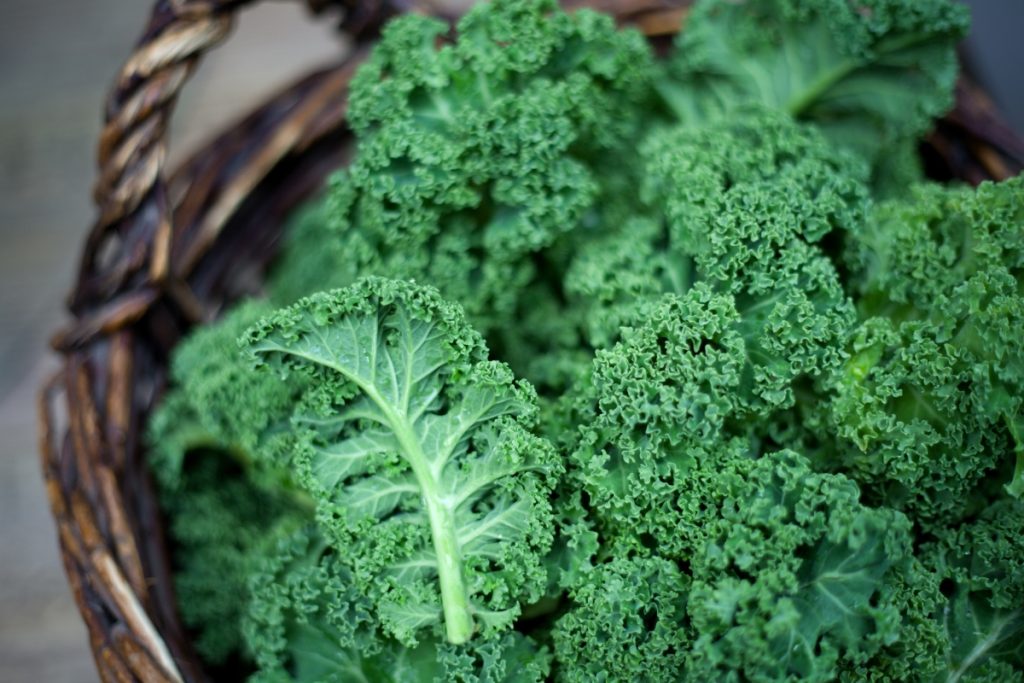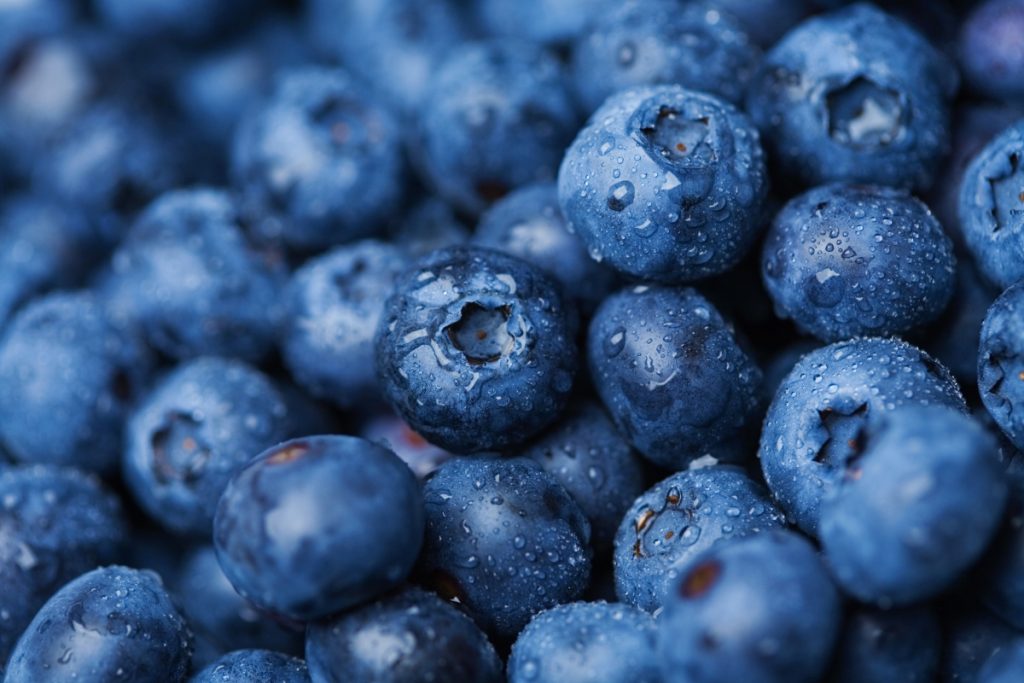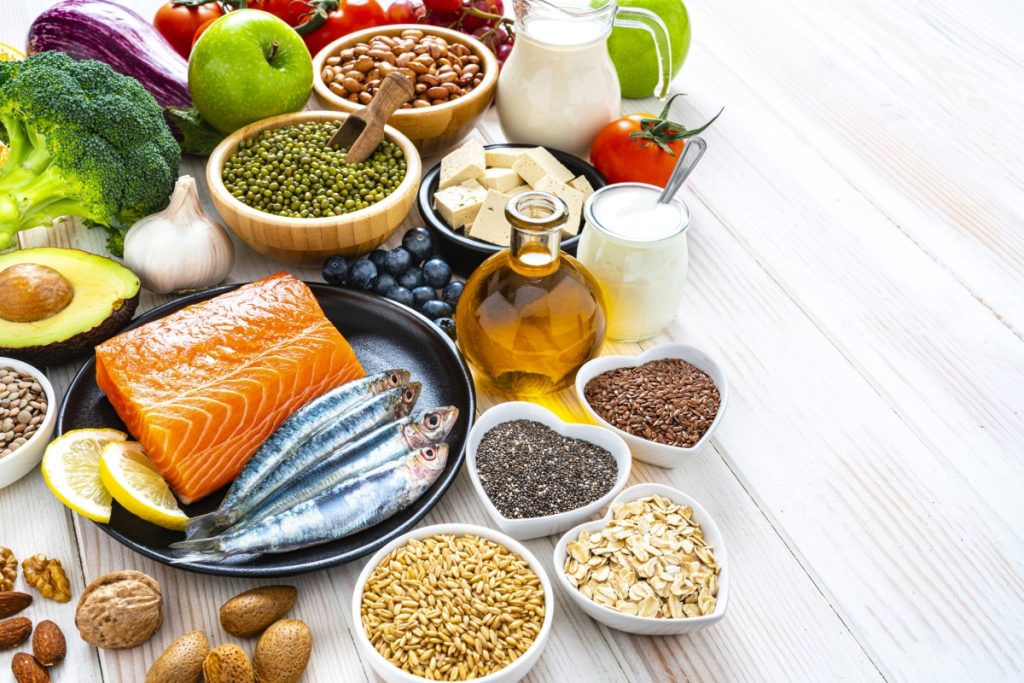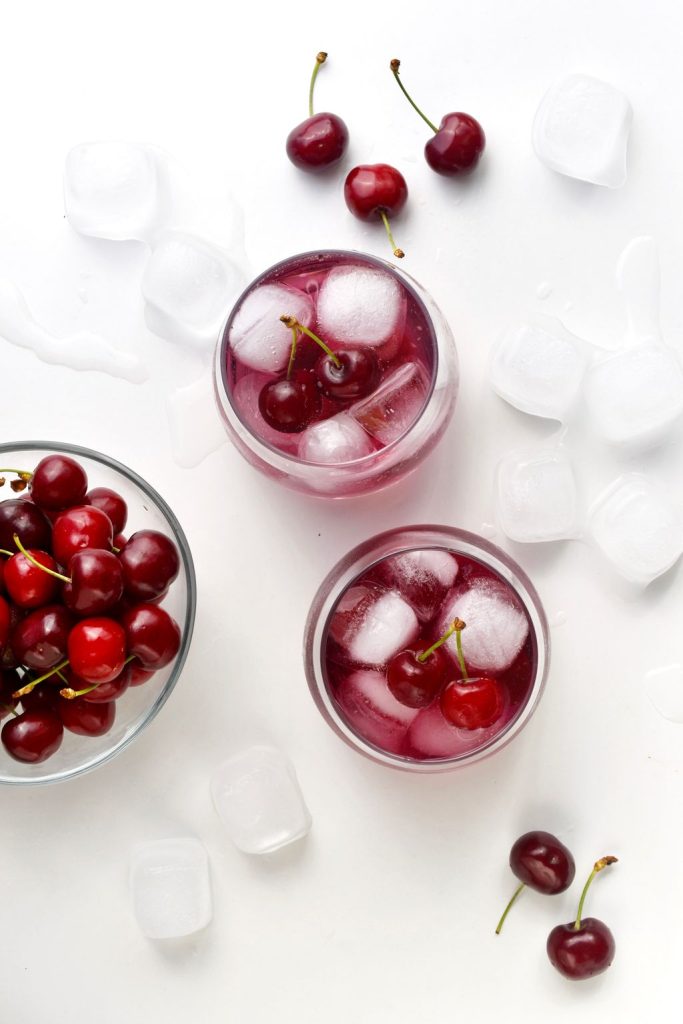What Are Nutrient-Dense Foods? 8 Options to Implement in Your Diet

Our health depends on the variety of nutrients we consume everyday. Each one of the macro and micro nutrients has an important role to play. Therefore, it makes sense to choose our diet based on its nutritional value.

Sadly, an average American diet has high calories and is low in micronutrients like vitamins and minerals. It generally consists of high-sugar, high-fat, and highly processed food. You can change that by deciding to improve your health through nutrient-dense foods.
What Is Nutrient Density?
The nutrient density of a food is the ratio of the relative amount of beneficial nutrients in food to total calories. Some other names for nutrient-dense are nutrient-rich and micronutrient dense. The foods below are the ones with high amounts of health-promoting nutrients but relatively low calories. They are low in added sugars, saturated fats, and sodium.
Two foods can have the same calories but different nutrient densities. For example, white rice worth 200 calories and kale worth 200 calories have the same calories, but the kale has a lot more vitamins and minerals than the rice.

Why Choose Nutrient-Dense Foods?
One of the differences between hunter-gatherers and modern humans is that they got their nutrition from nutrient-dense foods. Whereas we don’t get as many micronutrients because of industrially produced and processed foods and also from soil depletion. These are some of the factors driving health decline.
Getting adequate nutrition is necessary for good health. Nutrient-dense foods can help you fulfill your nutrition needs. These foods have a positive impact on your mood, energy levels, food cravings, hunger, and overall well-being.
8 Nutrient-Dense Foods To Add To Your Diet
Here’s a list of some great nutrient-dense foods that you can easily add to your diet.
1. Seaweed
Seaweed is a broad term used for a variety of algae and marine plants. It’s a popular item in Asian cuisine, especially in China and Japan. However, because of its high nutritional value and other benefits, seaweed is now commonly available in the United States.
Each kind of seaweed has a slightly different nutritional value, but all edible varieties are packed with rich nutrition. Adding seaweed to your diet could be a great way to make up for those missing vitamins and minerals in our diet. Common edible varieties of seaweed are kelp, nori, kombu, arame, wakame, sea lettuce, dulse, agar, and carrageenan.

One cup (15 grams) of seaweed contains 46 calories and more than 90% of the daily iodine value.
It also has rich amounts of thiamine, copper, folate, riboflavin, iron, and magnesium. Other than its high nutrient density, seaweed may also support heart health , weight loss , digestive health , and immune function.
2. Kale
Kale is the king of leafy greens. You might have thought this would be spinach, but kale contains less oxalates, and it is loaded with other nutrients just like spinach. Oxalates bind to minerals like calcium and magnesium and inhibit their absorption from the intestines, which cancels out some of the nutritional benefits of spinach but less so in kale.

Kale is one of the most nutrient-dense vegetables you can eat. It contains good amounts of calcium, magnesium, copper, manganese, folate, and iron. Kale is also low in calories: one cup (20.6g) contains only 9 calories.
3. Liver
Most people today prefer muscle meat over organ meat such as liver, heart, kidneys, sweetbread, tongue, and more. However, muscle meat is not as nutritious as organ meat. If you are after nutrient-dense foods, the next time you may opt for organ meat like liver.
Liver is the most nutritious organ of the body. Not only does the liver perform multiple functions for proper body function, it is also the store house for many nutrients. Beef liver is a rich source of folate, vitamin B12, vitamin A, vitamin B5 and B6, and niacin. It also has rich mineral content, such as good amounts of zinc, iron, phosphorus, and copper. One slice of liver contains 19.8g high-quality animal protein.
Note that eating too much liver may not be a good idea since liver is very high in vitamin A. So you may want to limit it to 2 – 3 times a week at most. However, most other organ meats are safe to eat on a regular basis.
4. Salmon
The tasty and versatile salmon is a great food to get some key nutrients for our bodies. It’s a nutrient-dense food that is particularly rich in selenium, omega-3 fatty acids, vitamin B12, vitamin A, and vitamin D. Eating salmon once or twice a week is enough to get your weekly dose of omega-3 fatty acids.

Salmon is also a great source of protein; a single serving of wild caught salmon has 21.6g of protein, whereas, farmed salmon has 22g. You can also get decent amounts of minerals like zinc, magnesium, potassium, and phosphorus by eating salmon.
5. Sardines
Sardines are not as popular as salmon and tuna in the U.S., but they are an amazing nutrient-dense seafood. Moreover, sardines feed on plankton and have less mercury levels compared to larger fish.
This small oily fish has a lot to offer. One serving of sardines contains 15g of proteins and rich amounts of vitamins and minerals. It is high in:
- Omega-3 fatty acids
- Vitamin B12
- Vitamin D
- Calcium
- Iron
- Niacin
- Magnesium
- And zinc
6. Walnuts
This widely popular snack is a calorie-dense but nutritious snack eaten on its own or added to salads, smoothies, and baked goods. The bulk of walnut content is composed of healthy fats and proteins. They are especially nutrient-dense in alpha-linolenic acid (ALA), which is a type of short-chain omega-3 fatty acid.
Walnuts are an excellent source of minerals, vitamins, and plant compounds. They contain folate, vitamin B6, vitamin E, copper, manganese, and phosphorus. Notable plant compounds in walnuts are phytic acid, melatonin, and catechins, all of which are powerful antioxidants that benefit health in numerous ways.
7. Legumes
Legumes are high-fiber food and one of the best sources of proteins for vegetarians. They include five different kinds of food:
- Peas
- Lentils
- Beans
- Peanuts
- And soybeans
Legumes are rich in iron, calcium, magnesium, antioxidants, and vitamin B. Each type of legume has its own nutritional value, but generally, they all make good, nutrient-dense foods. Just make sure that you soak and pressure-cook legumes. This helps degrade lectins and washes out antinutrients, which can inhibit the absorption of nutrients.
8. Blueberries
Blueberries are one of the most nutrient-dense foods. They have the highest antioxidant levels among common fruits and vegetables.
Blueberries are 85% water and make a perfect low-calorie, high-nutrition snack. They are a rich source of antioxidants, vitamin C, vitamin K, and manganese.

Flavonoids (a type of antioxidant) in these berries play a role in protecting you from free-radical damage. These antioxidants also have a positive role in the prevention and management of blood sugar, poor heart health, and cognitive decline.
Now that you have learned about nutrient-dense foods let’s see how we can add more of these foods to our diet.
8 Tips For Adding Nutrient-Dense Foods To Your Diet
The idea of eating nutrient-dense foods is attractive, but we often overlook our nutritional needs in the middle of our busy routines. Here are some quick tips to help you add nutrient-dense foods to your daily routine:
- Keep a stock of blueberries and boiled kale in your freezer and use them to make a breakfast smoothie. You can also add honey to get some extra nutrition.
- Pick walnuts as your mid-day snack, or you could take some walnuts, peanuts, and almonds, and coarsely grind them together. Sprinkle them on your other dishes.
- Check out seaweed snacks in the local grocery store. Pick the one you like and swap them with chips for munching time.
- Add seaweed, peas, and beans to your salads.
- Pressure-cook your favorite beans for the week so you have them ready to add to your meals, whether it’s a soup, salad, or side.
- Occasionally, add organ meat instead of muscle meat to your lunch. Try some new recipes for organ meat and see for yourself how you like the change.
- Order sardines or salmon when you are in the mood for fish. You could also pick a fish day for every week and grill a serving of sardines at home.
- Try some lentil soup recipes. In the process, you may find your next favorite soup.
Making The Most Of Nutrient-Dense Foods

While all these nutrient-dense foods are easily available, the next thing you need to ensure is their maximum digestion and absorption once you implement them into your diet. Naturally, your body produces a set of digestive enzymes that aid in the breakdown of carbohydrates, fats, and proteins.
When you have low digestive enzymes, more food is left undigested, so you absorb fewer nutrients. This may also cause digestive symptoms, such as:
- Bloating
- Cramping
- Gas
- Bowel irregularities
- Foul-smelling stools
Digestive supplements could help improve digestion and absorption of proteins and other nutrients.
If you are on a low carbohydrate diet, keto diet, or paleo diet, you may also consider keto supplements to aid digestion. They support fat and protein digestion, minimizing digestive upset from high-fat meals.
Conclusion
Nutrient-dense foods should make up a large part of your diet so you can reap the nutritional benefits of these foods. Also, to make the most of your healthy diet, consider supplementing with a digestive enzyme.
- World Health Organization. Nutrient Profiling.; 2010. Accessed May 31, 2022. https://apps.who.int/nutrition/topics/profiling/en/index.html
- FoodData central. Usda.gov. Accessed May 31, 2022. https://fdc.nal.usda.gov/fdc-app.html#/food-details/1103574/nutrients
- Cardoso SM, Pereira OR, Seca AML, Pinto DCGA, Silva AMS. Seaweeds as preventive agents for cardiovascular diseases: From nutrients to functional foods. Mar Drugs. 2015;13(11):6838-6865. doi:10.3390/md13116838
- Yang HW, Fernando KHN, Oh JY, Li X, Jeon YJ, Ryu B. Anti-obesity and anti-diabetic effects of Ishige okamurae. Mar Drugs. 2019;17(4):202. doi:10.3390/md17040202
- Ramnani P, Chitarrari R, Tuohy K, et al. In vitro fermentation and prebiotic potential of novel low molecular weight polysaccharides derived from agar and alginate seaweeds. Anaerobe. 2012;18(1):1-6. doi:10.1016/j.anaerobe.2011.08.003
- Ngo DH, Kim SK. Sulfated polysaccharides as bioactive agents from marine algae. Int J Biol Macromol. 2013;62:70-75. doi:10.1016/j.ijbiomac.2013.08.036
- Winter FS, Emakam F, Kfutwah A, Hermann J, Azabji-Kenfack M, Krawinkel MB. The effect of Arthrospira platensis capsules on CD4 T-cells and antioxidative capacity in a randomized pilot study of adult women infected with human immunodeficiency virus not under HAART in Yaoundé, Cameroon. Nutrients. 2014;6(7):2973-2986. doi:10.3390/nu6072973
- FoodData central. Usda.gov. Accessed May 31, 2022. https://fdc.nal.usda.gov/fdc-app.html#/food-details/323505/nutrients
- FoodData central. Usda.gov. Accessed May 31, 2022. https://fdc.nal.usda.gov/fdc-app.html#/food-details/168626/nutrients
- FoodData central. Usda.gov. Accessed May 31, 2022. https://fdc.nal.usda.gov/fdc-app.html#/food-details/171998/nutrients
- FoodData central. Usda.gov. Accessed May 31, 2022. https://fdc.nal.usda.gov/fdc-app.html#/food-details/175139/nutrients
- Zhao G, Etherton TD, Martin KR, West SG, Gillies PJ, Kris-Etherton PM. Dietary α-linolenic acid reduces inflammatory and lipid cardiovascular risk factors in hypercholesterolemic men and women. J Nutr. 2004;134(11):2991-2997. doi:10.1093/jn/134.11.2991
- FoodData central. Usda.gov. Accessed May 31, 2022. https://fdc.nal.usda.gov/fdc-app.html#/food-details/170187/nutrients
- Vuong T, Martineau LC, Ramassamy C, Matar C, Haddad PS. Fermented Canadian lowbush blueberry juice stimulates glucose uptake and AMP-activated protein kinase in insulin-sensitive cultured muscle cells and adipocytes. Can J Physiol Pharmacol. 2007;85(9):956-965. doi:10.1139/Y07-090
- Cassidy A, Mukamal KJ, Liu L, Franz M, Eliassen AH, Rimm EB. High anthocyanin intake is associated with a reduced risk of myocardial infarction in young and middle-aged women. Circulation. 2013;127(2):188-196.
- Devore EE, Kang JH, Breteler MMB, Grodstein F. Dietary intakes of berries and flavonoids in relation to cognitive decline. Ann Neurol. 2012;72(1):135-143. doi:10.1002/ana.23594
- Ames BN, Shigenaga MK, Hagen TM. Oxidants, antioxidants, and the degenerative diseases of aging. Proc Natl Acad Sci U S A. 1993;90(17):7915-7922. doi:10.1073/pnas.90.17.7915




